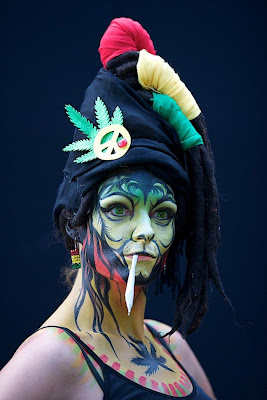Tuesday, August 31, 2010
SPY BEDROOM DORMITORIO DE ESPIA
Monday, August 30, 2010
Frequently Asked Questions About Laser Tattoo Removal Procedures
feminine zodiac Tattoo Girls

Chuan showed me the error of my ways so to speak, and made me realize that “free” and “unique” do not go hand in hand. Spending a tad amount of cash can really go a long way in helping you secure a design that will be a part of your body for the rest of your life. You wouldn’t want to fork out your hard-earned bucks for a laser surgery or cover-ups, right? Of course not! You’re better off spending the extra dough on a large pizza (sorry, can’t resist the pun) with all the trimmings to celebrate the end of your search for unique Libra tattoos.
How to Tattoo For Beginners
Are Tattoos Safe
Tattoos - A Living Form of Art
Break the Tattoo Taboo at Work
Second, what is the competition doing? Do their employees have visible ink? Scope out the competition to see what they are doing that your company can do, too.
What if all your work does not pay off, and ink is still out? Decide to stay or go. If you stay, cover up. If you go, use your ink to take the temperature of a prospective employer.
Body Painting - A Look at the Top 6 Festivals in the World
 There is a wide range of body painting festivals today. All include painted bodies, of course, and all include some kind of competitions; however there is a quite a range of skills and size among the different festivals, and some are more 'family friendly' than others.
There is a wide range of body painting festivals today. All include painted bodies, of course, and all include some kind of competitions; however there is a quite a range of skills and size among the different festivals, and some are more 'family friendly' than others. Here's a quick look at the top 6 body painting festivals, where they happen and what you can expect to find there:
 1. The World Body Painting Festival
1. The World Body Painting FestivalThis festival includes some of the most stunning professional body painting to be seen in the world today. A 3 day program includes dance, music and fireworks displays, as well as many competitions. Many of the body paintings here should fall under the category of 'fine art' with some of the dancers body paintings simply defying belief. A very large event and certainly worth traveling for.
Duration: Three days
Events Include: World Championships in 3 categories; night contest for UV effects, Special Effects awards; classes and workshops; BodyCircus (fantasy ball); music and dance performances; an international photo contest; and a huge fireworks show.
Artistic Range: One of the very best, with stunning range of styles and surprising themes.
Family Friendliness: Not clear, but it is in Europe, so not likely to ban under 18. However this body painting festival does not advertise itself as family friendly, as some others do.
2. The Canadian Body Painting Festival
This is another body painting festival that showcases simply stunning artists and finished work. The quality of the art here is similar to that seen at the World Body Painting Festival. The Festival is themed from year to year, with the recent theme being "It's A Jungle Out There." Also includes the Canadian Body Painting Championships.
Where: Nanaimo, British Columbia
Duration: Two days
Events Include: Competitions in overall body painting, brush and sponge, and airbrush; includes the Canadian body painting Championships
Artistic Range: Most stunning, and one of the best overall. Very life-like and fantastic double-take images.
Family Friendliness: Not stated - would be worth making a call first.
3. The International Body Painting Festival
This festival takes place in Mainz, a city with over two thousand years of history. It is located on the river Rhine, has strong Celtic roots and may have been founded by the Romans as early as 13 BC. One can imagine that body painting has a long history here, if you remember the Celtic tradition of painting their bodies before going into battle. Once again, the artistic ability and range is stunning at this International festival.
Where: Mainz, Germany
Duration: Weekend festival
Events Include: Competitions include special effects and face painting
Artistic Range: Very stunning; high artistic skill.
Family Friendliness: Not known but again, it's in Europe. I would call ahead.
4. Welsh International Body Painting Festival
This festival is a bit younger and less established than the top 3, although it has some impressive artwork considering that they are just getting started. Also the atmosphere is more 'fun' orinted, less 'high art' and family participation is strongly encouraged. A good festival to consider if you want to make it a family outing and see some amazing work in the process.
Where: Wales (of course)
Duration: Two days
Events Include: Hands on demonstrations; horror specialists and flower specialists
Artistic Range: High, and impressive for a smaller sized event; not as subtle or creative as some of the others
Family Friendliness: Very good; in fact they encourage families and camping, with an 'all ages' atmosphere and events designed for younger participants
5. The UK Body Painting Festival
This festival showcases some of the least impressive - although most amusing - body painting, although it should be said that it is not presented as a stuffy 'high art' affair, but more a circus or county fair type outing for the entire family. Fun, relaxed and un-selfconscious atmosphere allows for some of the more surprising and purely 'fun' body art to be seen. If you're not a supermodel and would like to get your body painted without worrying about snide comments, this might be a good option for you.
Where: Ashford, UK
Duration: Two days
Events Include: Family-oriented face painting, body painting competitions for professional and amateur categories, craft fair, children's activities, workshops, and a 'bouncy castle.'
Artistic Range: Fair; more of a family outing with a lots to do than a showcase of spectacular art.
Family Friendliness: Very high; advertised as family event. Lowest cost of all the body painting festivals - comparable to a movie ticket.
6. The US Bodypainting Festival (or New Mexico Body Painting Festival/US Bodypainting Competition)
There is definitely some impressive body painting to be seen at this festival, and a lot of creative innovation with hair and unusual designs that you won't see anywhere else. One example that springs to mind is a model dressed in racecar theme with red, white and blue hair sprayed out behind her as though flying in the wind. Also, if you're in the US this festival obviously doesn't require a plane ticket. However this is not a family outing, as it explicitly bans anyone under 18.
Body Painting - 3 Steps to Find the Best Supplies
Step 1. Know what kind of body painting supplies you need:
 There are many kinds of paint out there, and most are not for body painting. If you use the wrong kinds of paint, you may end up with you (or whoever you paint) having a mild to severe allergic reaction to the paint.
There are many kinds of paint out there, and most are not for body painting. If you use the wrong kinds of paint, you may end up with you (or whoever you paint) having a mild to severe allergic reaction to the paint. A mild reaction could be hives or a body rash. A severe reaction could be difficulty breathing. So don't take this lightly, and get the right paints to start with.
A mild reaction could be hives or a body rash. A severe reaction could be difficulty breathing. So don't take this lightly, and get the right paints to start with. The Best Supplies Body Painting
The Best Supplies Body PaintingYou will also want to get some good brushes and sponges for body painting. You don't need to invest in very expensive brushes, but I would suggest using natural fibers and not the very cheap kinds of craft brushes that will have the hairs falling out as you are using them. Also, cheap stiff brushes will be uncomfortable for the person you are body painting. So get some soft brushes, of 3 different sizes to start with:
- 1 very small with a pointed tip for fine detail
- 1 about a half inch wide
- 1 'fan' brush for blending
You will also want to get some sponges for body painting, in order to put light coats on and also for covering large areas quickly. You can find sponges in the same places you will find body paint. Which brings us to our next 'secret'...
Step 2. Know where to find materials for body painting:
There are two best suppliers for body paints and body painting that I have found.
If you look either of these names up on the internet you will be able to find the right kind of body painting supplies. (You are not likely to find these locally unless you live in a city that happens to have a body painting store or craft store that carries body painting supplies).
Snazaroo is marketed mostly for face painting, and in particular face painting for children. This is because Snazaroo fully complies with FDA and child safety guidelines. This are the only face paint that holds a "child toy safety rating." So if you are looking for the safest paint this would be a good choice.
The other two face and body painting suppliers that have great reputations out there are Kryolan and Mehron.
Kryolan mainly specializes in theatrical and professional body painting supplies, and Mehron is a pro makeup company that also specializes in body painting needs. You will find everything from paints to sponges to paint removal supplies at any of these suppliers, and the best way to find them is online.
Step 3. Know what kind of supplies will best fit your needs:
The main difference between these 3 face and body painting companies is that Snazaroo leans more toward kids and face painting supplies, While Kryolan and Mehron are marketed toward the adult, professional and theatre face and body painting crowd, and you will find a few more, higher grade options there.
Long Layered Emo Hair Highlights for Emo Girls
Long Layered EMO Hairstyles emo highlights

Long Layered Emo Hair Highlights for Emo Girls

Long Layered Emo Hair Highlights for Emo Girls

Long Layered Emo Hair Highlights for Emo Girls








































